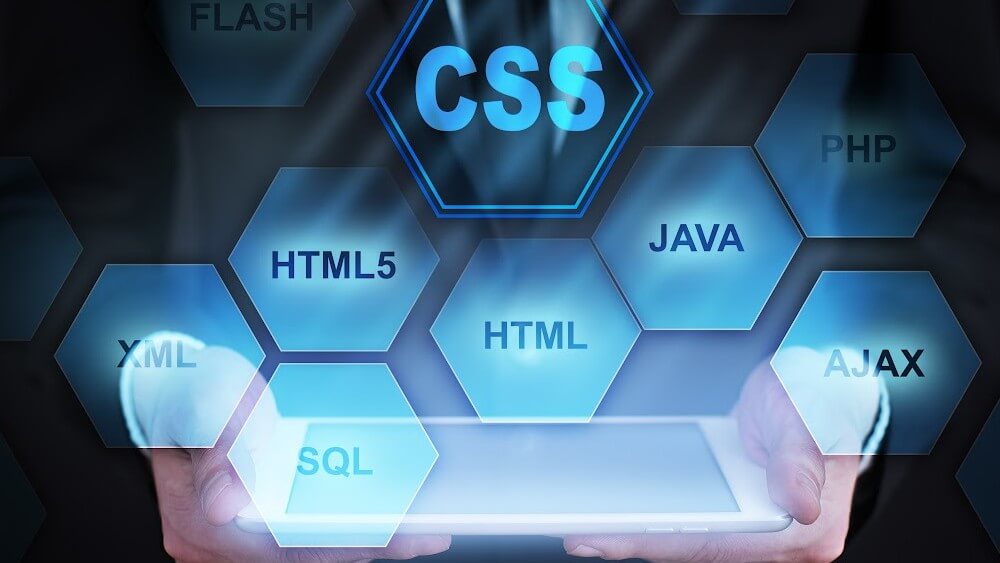Hi everyone!
It’s time for yet another interesting read on Web Development.
In this article, you’ll learn about the types of Web Development, the process involved in creating a website, and the tools required.
By the time you are done reading, you’ll be well-versed in what Web Development entails.
In brief, we’ll talk about:
- What is Web Development?
- Types of Web Development
- Web Development process, platforms, and tools
- Web Development resources
Let’s jump straight into it!
What is Web Development?

Web Development refers to developing and maintaining a website or an application.
It entails all the work behind the scene to ensure a website functions seamlessly.
Web Developers use different programming languages, depending on the task and the platform they are working on, to ensure a great user experience.
Web programming, database management, web publishing, and web design are some of the tasks that go into Web Development.
Types of Web Development

There are three different types of Web Development:
Front-End Development
The front end is also known as the client-side.
It’s the side of the website which you see and use.
This is the visual aspect of a website, which includes the colors, the fonts, the graphics, the texts, the drop-down menus, the navigation, and the layout.
Front-End Web Developers, also known as Web Designers, ensure a website, application, or any other digital product looks and feels great.
These professionals use HTML, CSS, and JavaScript to make this possible.
They use these coding tools to make the client-side of the website interactive and, at the same time, look good.
They have to ensure the content on the website is in the right place, and they are clear and visible.
Some Web Designers are Content Creators, making it possible to create website content as they develop the front end.
Further, they ensure the colors are in sync.
That includes background colors, headers, and text colors.
Additionally, they work on the outbound links, ensuring they are all formatted correctly and the buttons function.
When done with the client-side, it must be responsive and attractive.
Back-End Development
Backend is also referred to as the server-side.
This is the side that users can’t access, although it stores all the data and ensures the frontend is functioning properly.
It’s the backbone of the website, powering the whole website server.
Back-End Website Developers work on softwares, server websites, programs, APIs, and operating systems.
They use a server-side language to ensure proper functionality.
The most common server-side languages include Python, PHP, Ruby, Java, and tools such as Git, Oracle, and MySQL.
In the recent past, JavaScript has been increasingly used in backend development.
Back-End Developers are tasked with creating efficient code that responds to commands fast.
That’s because speed is an instrumental aspect of SEO.
Website Developers must also be flexible enough and have a thorough understanding of the programming languages to create an efficient programming solution that meets the needs of different clients.
Full-Stack Development
Full-stack development is a combination of both frontend and backend web page development.
Full-Stack Web Developers understand both the frontend and backend processes and strategies.
They know how the website works at all levels.
That means they understand how the backend and frontend relate to a robust website, app, or software.

They can store and manage the website database and create the website’s graphics and designs.
Full-Stack Developers are generalists with an all-around knowledge of the different parts of a web page and how to optimize websites for maximum performance.
However, being a Full-Stack Web Developer takes time, as you’ll have to master how the client-side and server-side relate and work.
Web Development Platforms

In this day and age, websites have become a necessity for businesses and organizations alike.
Having a website is the easiest way to reach potential clients out there.
Hence, website development is increasingly becoming mandatory rather than an option.
And since we are on the topic of website development, let’s talk about the different web development platforms.
WordPress
WordPress is a popular website development platform worldwide.
The platform has 62 programming languages that you can leverage.
Further, WordPress offers free web pages that allow for different website hosting options.
Additionally, it has several templates and customization options that allow users to personalize their websites to their tastes.
Weebly
Weebly stands out as the most convenient web development platform.
The platform has a drag-and-drop function that allows beginners and gurus to create professional websites.
You can easily move elements, add new features and even change templates to design a website that truly represents your brand.
Weebly allows you to add features in specific predetermined areas of the webpage.
It also has an app that makes adding or updating new features easier.
Wix
Wix is yet another great website development platform.
Like Weebly, the platform has a drag-and-drop function that allows you to play around with the many features and layouts to create a blog or an online shopping store.
You can create a website using the ready-made templates or start from scratch with a blank template.
And since you’ll use the drag-and-drop feature, the process is not complicated.
Wix has a free plan which has limited bandwidth.
You can also opt for a premium plan if you need advanced features to create your website.
Jimdo
Jimdo is the perfect web development platform if you have little to no web development technical skills.
With Jimdo, you can create a portfolio website, blog, or e-commerce shop.
It has a wide range of options when it comes to web design.
There are many options, from templates to features to background colors to designs.
The platform gives you endless possibilities to create an attractive and responsive website with a few clicks.
What makes Jimdo an excellent platform is the fact that you can change the outlook of your website by simply switching a template without losing the content you already created.
Web Development Process

When all is said and done, it’s time for the actual process of developing a website.
What exactly does it involve?
Let’s break it down for you in seven simple steps:
Develop a Plan
The first step to creating a website is to understand the purpose of the website and the target audience.
And so, whether it’s your website or you are creating one for a client, you must gather information to have a concrete idea of the task at hand.
You need to figure out what you want from the website.
Here is a list of questions to help you create a plan for the website:
- Why are you creating a website?
- Who is your target audience, and what do you want them to do on the website?
- What is the purpose of the content you’ll publish?
- What type of website will you develop?
- What is the budget for this project?
These questions will help you create a goal for the website.
Suppose your goal is to educate users about your company or sell your product.
Every element of the website development will be anchored on this goal.
Create a Site Map
Once you’ve gathered the necessary information and have a plan, it’s time to create the website layout.
You can do this manually on a piece of paper or online.
The key question here is, how will you structure the website to ensure a great user experience?
So, in this stage, you want to plan the website pages and sections that will make the site.
You’ll need to know the number of pages and the individual pages, say, home, blog, etc.
You need to plan how the different pages will link together.
Further, brainstorm the content that each page will have.
How will you organize the pages to ensure effective navigation?
With these questions answered, you can create a site map ready for the actual development of the website.
Write Your Website Code
The next stage is writing a code for the website.
There are different coding languages, depending on whether you are developing the front-end or back-end.
The language a developer uses depends on the functionality they are trying to achieve on the website.
The languages build and power a website.
Let’s talk about the different coding languages:
HTML
Hypertext Markup Language (HTML) is an essential programming language that’s widely used.
It’s one of the first languages programmers learn, as it is fairly easy.

HTML is a front-end language that tells a website where the headings, texts, and links should be displayed on a page.
It directs the website on what content to display.
CSS
Cascading Style Sheets (CSS) is a front-end language that’s equally easy to learn.
It’s an essential programming language that Front-End Developers must be proficient in.
This language is used in conjunction with HTML.
While HTML tells the webpage which content it should display, the CSS directs how to display it.
Cascading Style Sheets allow programmers to change colors, fonts, text size and style, image size, and position of elements and content on a website.
CSS makes a webpage look vibrant.
JavaScript
JavaScript is used to boost a website’s functionality.
It’s used for front-end and back-end development.
Programmers use JavaScript to add different functions to a website.
They can automate tasks, add animations or add any other interactive features.
HTML, CSS, and JavaScript are the three most popular web development languages.
Most websites, if not all, use them in one way or another.
PHP
Hypertext Preprocessor (PHP) is yet another programming language for the back-end.
This language is quite easy to learn and use.
Hence, it’s popular among beginners.
Most small websites operating on platforms like Wix or WordPress operate on PHP.
PHP makes it easy to modify such websites.
Java
Java is one of the oldest computer languages.
It’s a back-end language that helps Developers create a responsive website that is fast and easily scalable.
Due to its scalability, Java is used in larger websites such as Amazon and eBay.
Further, it’s easy to maintain, making it ideal for small and big websites.
Build the Back-End of the Website
Once the preliminary stages are set, it’s time to code.
If you are using a content management system like WordPress, you can use the already developed templates to create your site.
Don’t be tempted to grab any template and edit the content.
To have a unique website design, you must do more than that.
A template is a starting point.
So, put some effort into creating a completely new design.
Try to make it as original as possible.
Suppose you choose to code.
You’ll use HTML, JavaScript, and CSS.
While HTML is the building block, the two coding tools help enhance the website.
When you are done with the back-end coding, optimize all the elements to ensure everything functions effectively.
Think of where your website will be hosted, how you’ll organize it, store and retrieve data, set up cookies, etc.
Build the Front-End of the Website
The next logical step after developing the back-end is developing the front-end.
The front end is the part of the site that is accessible to customers, visitors, and users.

Front-end development involves navigation layout, color schemes, and font choices.
Suppose you are coding from scratch.
Build the code first before adding the different elements.
Purchase a Domain Name
The next stage of building websites involves getting a domain name.
It will be in your best interest to use your business name as the domain name.
This will make it easier for visitors to find you.
You can search on sites such as GoDaddy to find out if the name you’ve chosen is already taken or not.
If it’s not taken, it’s your lucky day.
However, you may find that it’s taken, in which case you’ll have to twerk it until you find one that’s unique and not taken.
Ensure you keep the name short and memorable.
Test and Launch the Website
Once all the above steps are done, you can launch your website.
But before you do that, you need to test everything to ensure they are working fine.
You want to test for glitches, search for typos, check the hyperlinks, and ensure the website is mobile-friendly and works well on other devices.
If everything is working fine, you can make the website public.
You’ll need to continuously update and optimize the website to boost its performance on the search engine.
Web Development Tools

Programming language is only one side of the equation in Web Development.
You must also learn several development tools to excel as a Full-Stack Web Developer.
Let’s dive right into the tools:
Git
Git is a control framework that Developers use to track changes in computer files.
It makes it easier for Programmers to coordinate workflow and track their progress.
Many organizations use Git.
Hence, it will be in your best interest to learn about it as you plan to launch a career in website development.
GitHub
GitHub allows Programmers to collaborate on a project from anywhere.
Most companies use GitHub for project management and collaboration.
Hence, a lesson on its basics, such as branches, pull requisitions, and repositories, are essential.
Code Editor
Code Editor is instrumental when building a website, although some developers use the Integrated Development Environment (IDE).
There are many code editors, including Sublime Text, Atom, Vim, and many more.
But the most popular is VS Code.
Code editors allow Programmers to write and edit codes.
Browser DevTools
DevTools allow Web Developers to troubleshoot, edit CSS properties, debug JavaScript errors, edit HTML tags, and so on.
Web Developers must be proficient in any of the many DevTools.

Depending on the web browser, Developers can use Chrome DevTools or Firefox DevTools.
Most Developers prefer Chrome DevTools.
Web Development Courses

If you are interested in steering your career path toward Web Development, you’ll be interested in learning more about Web Development.
There are many resources you can leverage to make your dream a reality.
Here are online courses, both paid and free, that you can sign up for and get started:
Khan Academy
Khan Academy is a non-profit that offers many free educational resources.
Learners can sign up for their many computing courses.
They can enroll in Computer Programming, Computer Science, an Hour of Code, Computer and Internet, and many more.
The academy has a course not only in computers but also in a wide range of disciplines such as Algebra, Macroeconomics, and many more.
TutorialsPoint
TutorialsPoint has loads of free Web Development Programs as well as paid ones.
You can get free tutorials on MySQL, Angular JS 4, HTML, JavaScript, and PHP.
It has a full-fledged Full-Stack Web Development course that goes from €2,799.99.
Egghead
Egghead is a project by a group of web development professionals.
The website has loads of videos, books, and podcasts on full-stack courses.
You’ll also learn about the best coding tools in the industry.
Team Treehouse
You must pay a monthly subscription to learn on the Team Treehouse platform.
Once you’ve paid your subscription fee, you’ll have access to dozens of Web Development Courses.
Some of the courses here include Beginning Python, Front-End Web Development, and Full-Stack JavaScript.
FreeCodeCamp
FreeCodeCamp is a non-profit organization dedicated to helping people learn about coding free of charge.
The platform has many videos, interactive lessons, and articles.
Students can also be part of study groups and connect with other Web Developers worldwide.
Conclusion

The internet is constantly changing, and Web Developers are at the forefront of these developments.
Their expertise is instrumental in the development of blogs, applications on mobile devices, and even social media networks.
That means the demand for Web Developers is always rising, which is a great reason to learn about Web Development.
Since you have a snippet of what Web Development is about, you can start your journey and learn the coding languages and tools required to build a website on the many learning resources online.
FAQs

How can I learn Web Development?
There are several ways you can learn Web Development.
The internet has dozens of articles and YouTube tutorials on the basics of Web Development.
There are also free online courses on web development on platforms such as Khan Academy.
You can also opt for paid courses.
How long does it take to learn Web Development?
Bootcamp in-person Web Development Courses can take between 3-4 months.
Online Web Development Courses are often self-paced.
Hence, you can take between three months to several years.
It depends on the time you dedicate to the course.
Further, you need to update your knowledge once you’ve become a Web Developer.
Is Web Development a good career?
Web Development is a great career.
According to the Bureau of Labor Statistics, Web Developers earn an average of $77,200 annually.
That’s an average of 37.21 per hour.
The profession is projected to grow by 13%, translating to 17,900 job openings annually between 2020 and 2030.
What are the three types of Web Development?
Front-End Development: This is the client-side of the website.
It involves the website layout, design, font size, and colors.
Back-End Development: This is behind the scene.
The server-side of Website Development involves the database and the server.
Full-Stack Development: This is a combination of both Front-End and Back-End Development.
What is Front-End Web Development?
Front-End Web Development is the visual part of the website which the users interact with.
Front-End Developers use HTML, CSS, and JavaScript to create a site that feels and looks good.
They ensure that the client-side is easy to navigate and that the content is clear and in the right place.
What is Full-Stack Web Development?
Full-stack Web Development is a combo of front-end and back-end.
Developers that provide both services must understand how the different levels of Website Development work.
They must be able to work on data storage and management in the back end and graphic design in the front end.
What is Website Development?
Website Development involves creating and maintaining websites.
It might be a simple website page or a complex one, such as a mobile application, e-commerce, or social network services.
It involves web markup, coding, and other related tasks that ensure a website functions seamlessly.
What is Web Programming?
Web Programming is the same as Web Development and Web Coding.
It’s the process that is involved in creating a website.
Web Programming involves writing the source code to create a website.
It’s both the Front-End and Back-End Development work.
What does a Web Developer do?
The main role is to create websites.
They must ensure the website is responsive and appealing to the users.
It has to meet the company’s or client’s requirements.
Further, they have to update and optimize the website for better performance.
What are the benefits of Web Development?
A well-structured and responsive website is good for search engine optimization.
It makes it easier for the page to be indexed.
Better performance: Web developers usually optimize and update the website to ensure it performs better.
Higher sales conversion: A site that enhances user experience increases sales.
What are the skills required for Web Development?
There are several technical and soft skills.
The technical skills include:
– Programming languages
– Computer literacy
– Strong numeracy skills
Soft skills include:
– Attention to details
– Strong communication skills
– Excellent problem-solving skills
– Team player
– Creative mindset
– Ability to explain technical terms in a simple way
What is a Web Developer’s salary?
According to BLS, Web Developers earn around $77,200 per year.
Their hourly wages average around $37.21.
Payscale gives an average of $60,834, with most web developers earning between $42k and $90k.
The amount a Web Developer earns varies depending on their work and years of experience.









